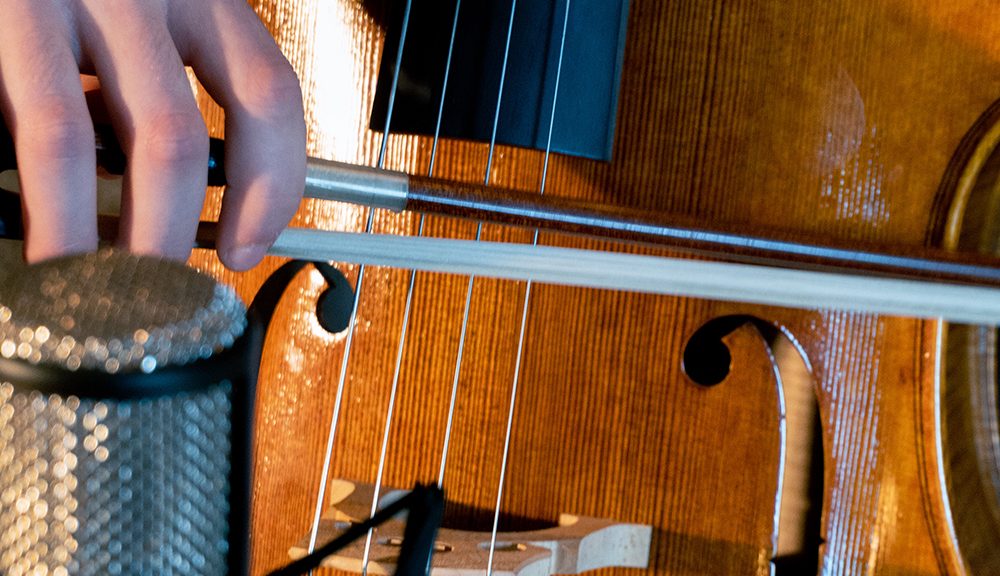Recording and Amplifying the Cello: Tips from the Studio and Stage
by Max Dyer, Cellomax Studio
For decades I’ve played cello on countless recording projects and produced a few myself. These days, most of my recording happens here at my home setup—Cellomax Studio—but I still work closely with musicians and producers from all over the world.
Over the years, I’ve learned (sometimes the hard way) what works for me. Here are a couple of my go-to mic placements, gear recommendations, and live sound tips.
Miking the Cello in the Studio
Finding the Sweet Spot
Every sound engineer has an opinion, and every mic behaves differently. But after a lot of trial and error I generally position the mic about a bow length away, roughly at bridge height, slightly off-axis (never directly perpendicular) for a brighter, more natural tone. Too close can make the cello sound boomy; too far can lose presence.
Two Go-To Mic Placements
-
Bridge
-
-
Tone: Bright, full, and “in-your-face.”
-
Distance: 12- 15 inches from the bridge.
-
-
Example: Claude Peritt – Chicago Land (Sugar Hill Studio, Houston, Andy Bradley).
2. F-Hole
-
-
-
Tone: Smoother, more complex, with added clarity from floor early reflections.
-
Distance: 16–22 inches away, even with the bottom of the right f-hole.
-
-
Example: The Champion Sisters – Unconditional Love (Sugar Hill Studio, Houston, Andy Bradley).
Classical Recording
For classical projects, mic placement is farther away to capture room reverb, so the recording space itself is critical. For US orchestral audition recordings, one default placement is 6 feet up, 8 feet away.
My Favorite Cello Studio Mics
-
Schoeps CMC6 with MK41 Hypercardioid Capsule
My #1 choice for cello—fantastic for both studio and live use. I run mine through a high quality preamp with a high-pass filter at 70 – 80Hz to remove low-end rumble. A matched pair is superb on cello. -
Royer Labs Ribbon Mic is another great one for cello (or almost anything!) I have sometimes close miked the cello on rock recordings.
Live Sound for Cello
- DPA 4099-C Microphone
-
Clips behind the bridge, aimed toward the sound post, slightly off-axis.
-
Roll off from 80–100Hz to control low-end buildup.
Pickups and Blending
-
Realist Pickup under the bridge foot for high-volume gigs (rock, drums).
-
Blend pickup and mic—use as much mic as possible before feedback, then fill in with pickup signal.
Loud Stage Situations
-
In-ear monitors save my hearing and give me a clean mix.
-
Work with the sound engineer to balance your own sound with the band mix.
Hearing in the Orchestra Pit
- As my hearing has changed, I’ve had to adapt.
-
I use an in-ear monitor in my left ear when seated near loud instruments (piccolo, timpani, brass).
-
Earbuds: Westones for maximum isolation, or Sennheiser IE4 for adjustable isolation.
Final thought:
Whether in the studio or on stage, cello sound is a partnership between player, instrument, room, and technology. A few inches of mic movement—or a subtle EQ tweak—can make the difference between a good sound and a great one. Experiment, trust your ears, play out and let the cello resonate.



